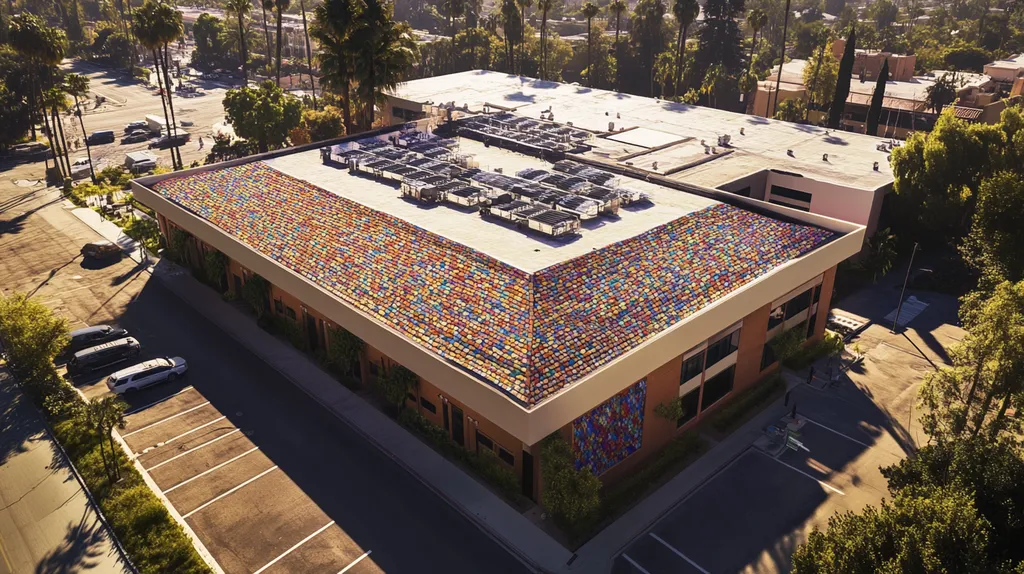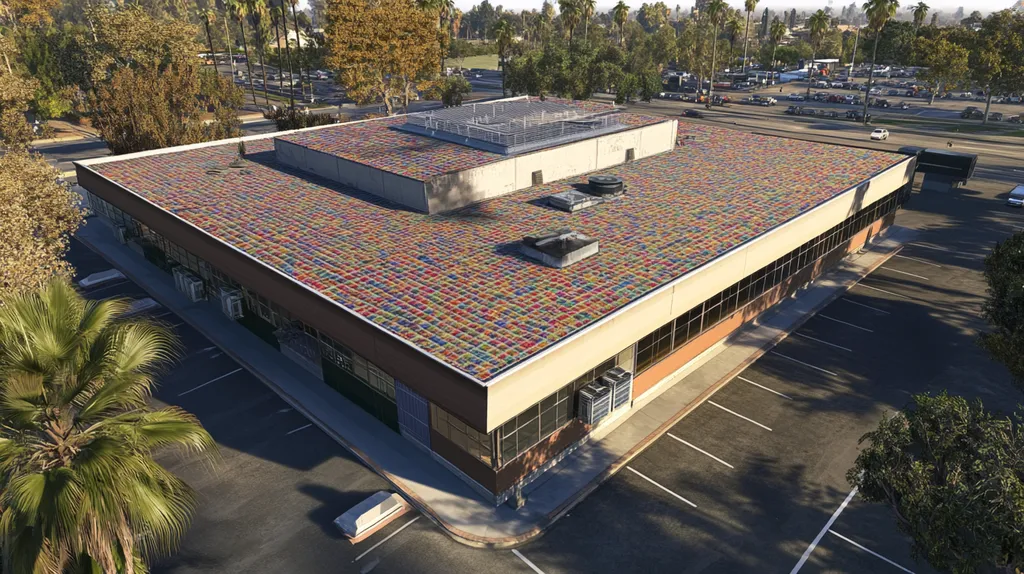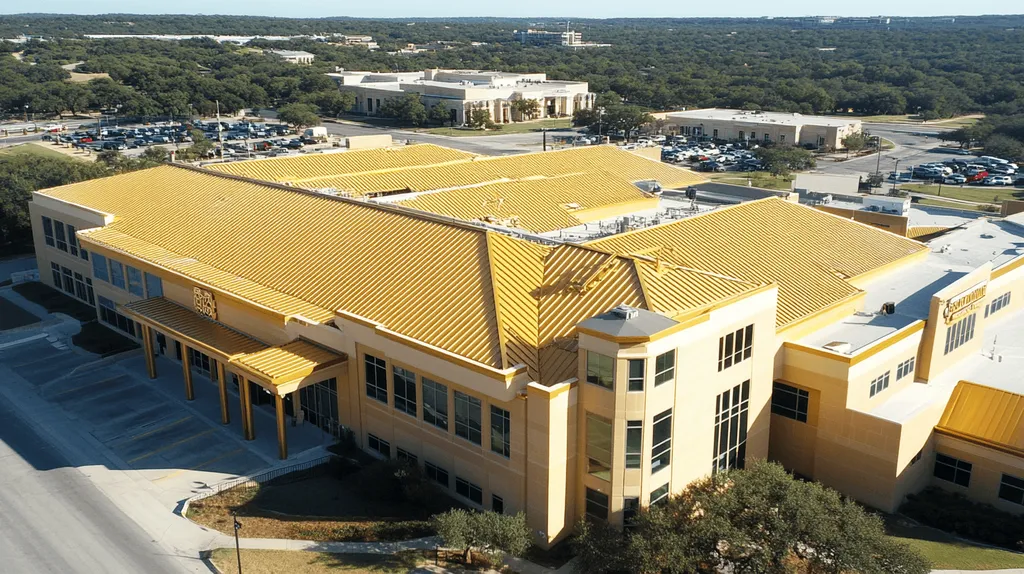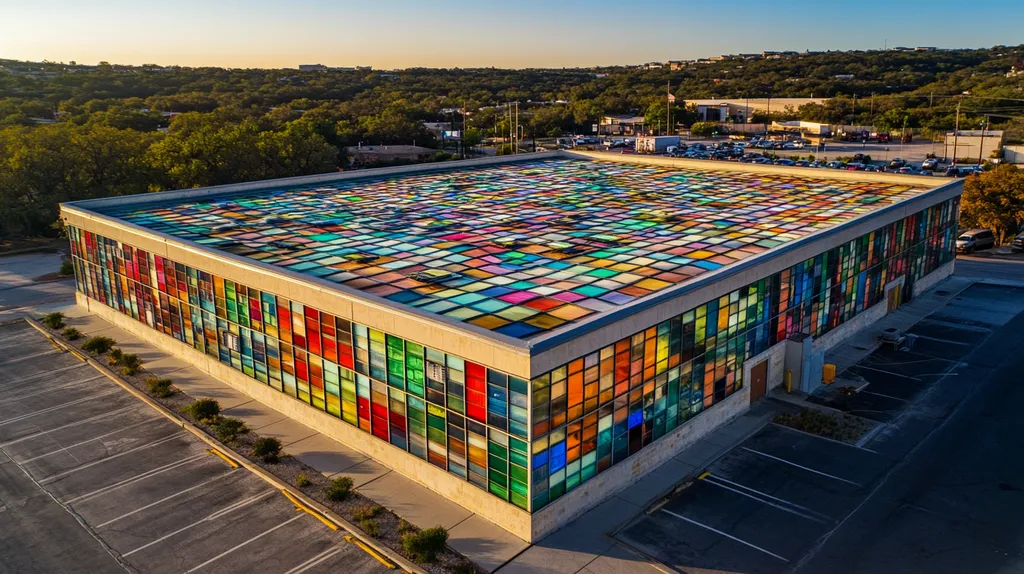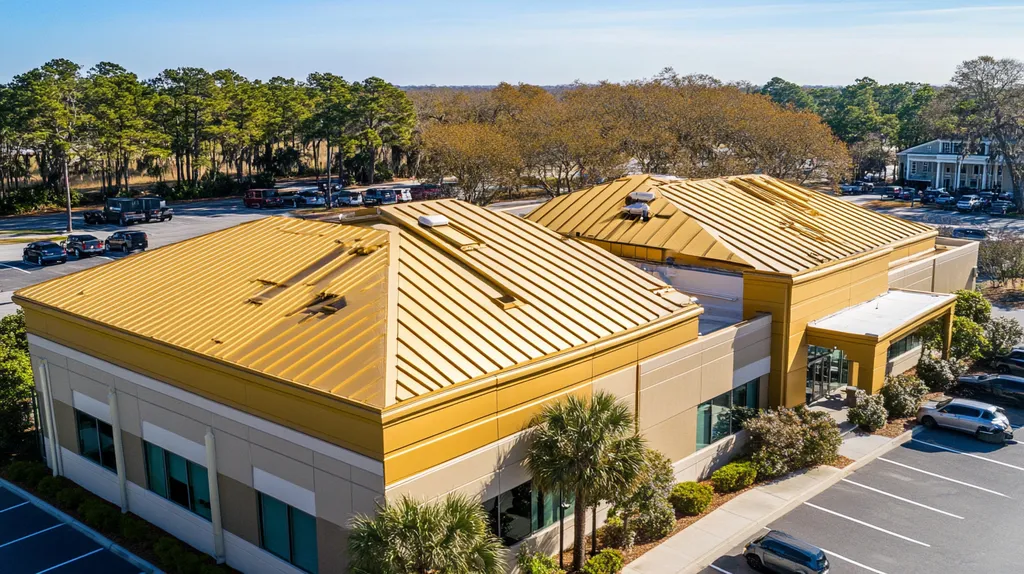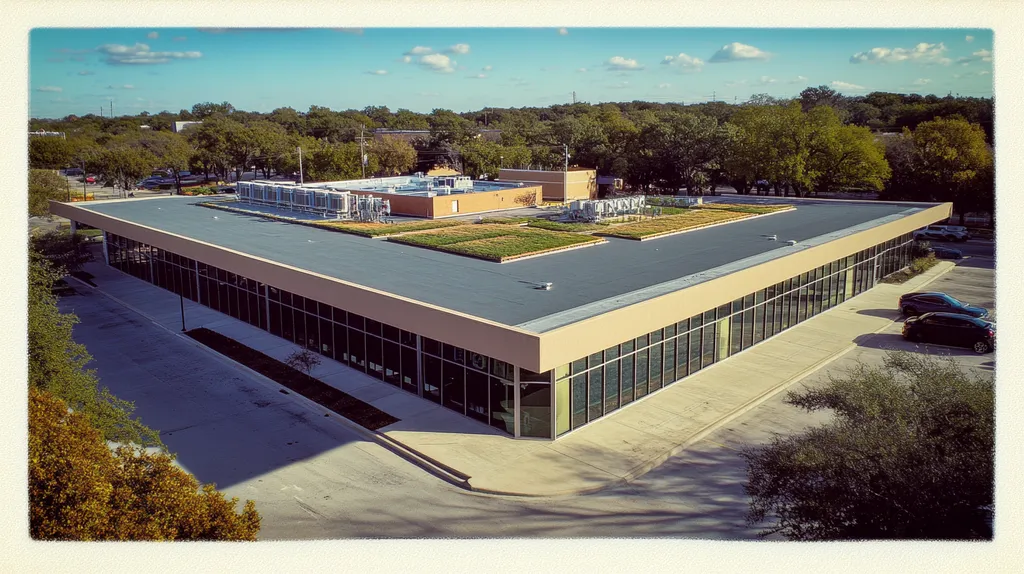Welcome to today’s Battle Royale featuring two roofing heavyweights: “Slate Roofing” in the east corner versus “Tile Roofing” in the west!
Tonight’s showdown pits these contenders against each other across six punishing rounds designed to test every aspect of their performance for Unique Historical Requirements for Commercial Roof Renovation Projects.
At stake? Millions in potential costs, decades of building protection, and the critical performance demands of modern commercial and industrial facilities.
Our professional judging panel will evaluate each round on technical merit, real-world performance, and value delivery. After all six rounds, we’ll declare our ultimate champion.
Ladies and gentlemen, facility managers and building owners… it’s time to rumble!
ROUND 1: INITIAL COSTS & INSTALLATION
When renovating historic commercial properties, choosing between slate and tile roofing involves critical decisions that impact both preservation goals and bottom-line costs. The wrong choice can lead to budget overruns, extended timelines, and potential non-compliance with preservation requirements. Understanding the nuances of materials, installation requirements, and project management becomes essential for successful outcomes.
Material Expenses
Premium slate roofing materials command prices between $15 to $40 per square foot, reflecting their natural formation and heritage appeal. This investment includes not just the slate itself, but also specialized underlayment and flashing materials required for historical accuracy.
Traditional clay or concrete tiles present a more economical option, typically ranging from $8 to $20 per square foot. While offering similar aesthetic appeal, tiles provide flexibility in matching historical appearances without the premium cost of natural stone.
The roof’s role in preserving architectural character makes material selection particularly crucial for historic properties. Both options must retain character-defining features while meeting modern performance standards. (source: Baltimore City Historic Preservation Guidelines)
In terms of material expenses, tile roofing claims the ADVANTAGE due to lower initial costs while maintaining historical authenticity.
Installation Complexity
Slate installation demands specialized expertise and careful attention to historical detail. Each piece must be individually fitted and secured, with proper overlap and alignment crucial for both aesthetics and water protection.
Tile installation, while still requiring skill, follows more standardized procedures. Modern tile systems often include integrated mounting points and alignment guides, streamlining the installation process while maintaining historical appearances.
The weight of both materials necessitates thorough structural assessment and potential reinforcement. However, slate’s higher density typically requires more extensive structural modifications.
Given the relative ease of installation while achieving similar historical results, tile roofing takes the ADVANTAGE in this category.
Project Timeline
Slate roofing installations typically require 2-3 weeks longer than comparable tile projects due to the precise cutting and fitting needed for each piece. Weather delays can significantly impact these timelines, as slate installation demands specific conditions.
Tile roofing projects benefit from more efficient installation processes and greater weather tolerance during installation. The standardized nature of tiles allows for faster placement while maintaining historical accuracy.
Both materials require careful scheduling to minimize disruption to building occupants. However, tile’s faster installation reduces the exposure period during renovation.
The shorter completion time and reduced weather sensitivity give tile roofing the ADVANTAGE for project timelines.
ROUND 1 WINNER: TILE ROOFING
ROUND 2: DURABILITY & LIFESPAN
When renovating historic commercial properties, durability and lifespan considerations directly impact long-term preservation goals and financial planning. Recent studies show premature roof failures can cost businesses up to five times more than the initial installation, making material selection crucial for historic properties.
Material Longevity
Slate roofing systems demonstrate exceptional longevity, with documented lifespans exceeding 150 years in well-maintained installations. This natural stone material maintains its structural integrity and appearance even under harsh weather conditions.
The density and composition of slate make it highly resistant to freeze-thaw cycles, which can deteriorate other roofing materials. Its non-porous nature also prevents water absorption and subsequent damage from occurring.
Clay and concrete tiles typically offer lifespans of 50-75 years when properly installed and maintained. While impressive, this falls significantly short of slate’s proven durability record.
Given its superior longevity and proven track record in historical applications, slate roofing claims the ADVANTAGE in this category.
Weather Resistance
Slate’s natural formation creates an exceptionally weather-resistant material that maintains its properties throughout decades of exposure. Its density and layered structure provide superior protection against wind uplift, hail impact, and extreme temperature variations.
Tile roofing offers robust weather resistance through its interlocking design and material composition. Modern manufacturing processes enhance its ability to withstand severe weather conditions while maintaining historical authenticity.
Both materials must retain original methods of construction while meeting modern performance requirements. Alterations and repairs often focus on preserving original materials where feasible, provided safety standards are maintained. (source: 2016 California Historical Building Code)
With comparable performance in weather resistance and historical preservation requirements, this category results in a TIE.
Maintenance Requirements
Slate roofing typically requires minimal maintenance beyond periodic inspections and occasional repairs to flashings. Its durability means fewer interventions are needed throughout its lifespan, reducing long-term maintenance costs.
Tile roofing systems need more frequent maintenance to address potential issues with individual tiles and underlying support structures. While repairs are generally straightforward, they occur more often than with slate installations.
Regular maintenance costs over time can significantly impact the total cost of ownership for historic properties. Slate’s lower maintenance requirements provide measurable long-term advantages.
The reduced frequency and scope of maintenance interventions give slate roofing the ADVANTAGE in this category.
ROUND 2 WINNER: Slate Roofing
ROUND 3: PERFORMANCE FACTORS
Performance factors in historic commercial roofing directly impact both preservation success and operational costs. Recent industry data shows that inadequate performance specifications in historic renovations can lead to premature failures, costing organizations up to three times the initial installation investment. Understanding how slate and tile options perform across key metrics is essential for making informed renovation decisions.
Durability
Slate roofing material offers exceptional resistance to physical impact and weathering, with documented cases of installations lasting over 150 years. Its natural density and composition provide superior protection against freeze-thaw cycles, UV exposure, and extreme temperature fluctuations.
Traditional tile roofing typically delivers a 50-75 year service life when properly installed and maintained. While significant, this lifespan falls notably short of slate’s proven longevity record in historical applications.
Repair and installation of both materials requires specialized construction skills and careful attention to historical authenticity. The use of restoration specialists with proven expertise helps ensure long-term durability while preserving architectural character. (source: U.S. General Services Administration)
Given its superior longevity and proven performance in historical applications, slate roofing claims the ADVANTAGE in durability.
Energy Efficiency
Natural slate’s thermal properties and reflective characteristics help regulate building temperatures throughout the year. Its density and layered structure provide excellent insulation value while reflecting significant solar radiation.
Clay and concrete tiles offer moderate thermal performance through their mass and air gaps between tiles. However, their thermal storage properties can sometimes work against energy efficiency goals in certain climates.
When considering total energy impact over decades of service, slate’s consistent performance and minimal degradation provide measurable advantages.
The superior thermal properties and long-term performance stability give slate roofing the ADVANTAGE in energy efficiency.
Weather Protection
Slate roofing provides exceptional protection against severe weather conditions including heavy rain, hail, and high winds. Its natural formation and installation method create multiple layers of defense against water infiltration.
Tile roofing systems rely on overlapping pieces and proper underlayment to achieve weather protection. While effective when new, aging tiles can become more susceptible to weather-related damage and displacement.
Both materials must maintain their protective capabilities while preserving historical appearance, but slate’s natural properties provide superior long-term weather resistance.
The enhanced weather protection and proven track record give slate roofing the ADVANTAGE in this category.
ROUND 3 WINNER: SLATE ROOFING
ROUND 4: MAINTENANCE REQUIREMENTS
Maintaining historic commercial roofing systems represents a critical challenge for property managers, with improper maintenance leading to catastrophic failures and preservation violations. Industry data shows that deferred maintenance can reduce a roof’s functional lifespan by up to 50% while triggering exponentially higher repair costs. Understanding the specific maintenance demands of slate versus tile roofing becomes essential for protecting both the building and its historical integrity.
Regular Inspection Requirements
Slate roofing demands specialized inspection protocols focusing on individual slate integrity, fastener conditions, and flashing systems. These inspections typically require certified professionals with specific knowledge of historical slate installation methods and failure patterns.
Regular inspections must carefully document any changes to preserve the roof’s historical character while identifying potential issues. The National Park Service emphasizes that maintaining original materials and features is crucial for preserving architectural authenticity. (source: National Park Service)
Tile roofing inspections follow more standardized procedures, with clear indicators for tile replacement needs and underlayment condition assessment. While still requiring expertise, these inspections can often be conducted by general roofing professionals familiar with historical structures.
Given the more straightforward inspection requirements and wider availability of qualified inspectors, tile roofing claims the ADVANTAGE in this category.
Repair Complexity
Slate repairs demand precise matching of material characteristics and installation techniques to maintain historical accuracy. Each repair must consider the surrounding slates’ condition and the overall roof pattern to ensure seamless integration.
The specialized tools and techniques required for slate repairs limit the available contractor pool and increase response times for urgent repairs. Even minor repairs often require extensive preparation and careful execution to avoid damaging adjacent materials.
Tile roofing repairs typically involve more standardized procedures and readily available replacement materials. While historical accuracy remains important, the systematic nature of tile installations simplifies many repair scenarios.
The relative simplicity and accessibility of repair procedures give tile roofing the ADVANTAGE in repair complexity.
Preventive Maintenance
Slate roofing systems benefit from their inherent durability, requiring minimal preventive maintenance beyond periodic cleaning and flashing inspections. Their natural resistance to biological growth and weathering reduces the need for regular treatments.
The dense, non-porous nature of slate helps maintain its protective properties with minimal intervention. When properly maintained, slate roofs can go decades between major maintenance events.
Tile roofing requires more frequent preventive maintenance to address potential issues with underlayment deterioration and biological growth. Regular cleaning and sealing treatments help maintain both appearance and performance.
The reduced frequency and scope of preventive maintenance requirements give slate roofing the ADVANTAGE in this category.
ROUND 4 WINNER: TIE
ROUND 5: SUSTAINABILITY CREDENTIALS
Sustainability credentials have become critical decision factors in historic commercial roofing projects, with implications for both environmental impact and operational costs. Recent industry data shows that non-sustainable roofing choices can increase energy costs by up to 30% while potentially violating evolving building codes and certification requirements.
Property managers must carefully evaluate how roofing material choices impact their sustainability goals, from initial manufacturing through end-of-life disposal. Understanding these impacts helps ensure compliance with environmental regulations while protecting long-term property value.
Lifecycle Assessment
Slate roofing’s natural composition and exceptional durability result in minimal environmental impact throughout its lifecycle. Its 150+ year lifespan means fewer replacements and significantly reduced waste generation compared to alternative materials.
The quarrying and processing of slate requires minimal chemical treatment or synthetic additives. This results in lower embodied energy and reduced environmental impact during manufacturing.
Tile roofing typically requires replacement within 50-75 years, creating more frequent disposal and replacement cycles. While modern manufacturing processes have improved, tile production still involves significant energy consumption and resource usage.
Given its superior longevity and lower environmental impact, slate roofing claims the ADVANTAGE in lifecycle assessment.
Energy Efficiency
Natural slate’s thermal mass and reflective properties help regulate building temperatures throughout the year. Its density and layered structure provide excellent insulation while reflecting significant solar radiation.
Proper installation techniques must ensure adequate anchorage while maintaining historical accuracy and preventing moisture penetration. These requirements directly impact the roof system’s overall energy performance. (source: National Park Service Secretary of the Interior’s Standards for Rehabilitation)
Tile roofing systems offer moderate thermal performance through their mass and air gaps between tiles. However, their thermal storage properties can sometimes work against energy efficiency goals in certain climates.
The superior thermal properties and consistent performance give slate roofing the ADVANTAGE in energy efficiency.
Material Sustainability
Slate’s natural formation means it requires minimal processing before use, reducing manufacturing-related environmental impacts. At end-of-life, slate can be recycled into various applications or safely returned to the environment.
The material’s durability allows for frequent salvage and reuse in other historic renovation projects. This supports preservation goals while reducing demand for new material production.
Tile roofing materials require more intensive manufacturing processes, though modern techniques have improved efficiency. While tiles can be recycled, the process often requires more energy than slate recycling.
The minimal processing requirements and superior recyclability give slate roofing the ADVANTAGE in material sustainability.
ROUND 5 WINNER: SLATE ROOFING
ROUND 6: SPECIALIZED APPLICATIONS
The specialized application requirements for historic commercial roof renovations present significant challenges, with mistakes potentially costing organizations millions in repairs and compliance violations. Recent industry data shows that 40% of historic renovation projects face delays or budget overruns due to improper material selection and application methods.
Property managers must carefully evaluate how different roofing materials meet specialized historical requirements while delivering modern performance. Understanding these nuances helps prevent costly mistakes and ensures project success.
Historic Preservation Regulations
Historic preservation requirements significantly impact material selection and installation methods for commercial roof renovations. These regulations often mandate specific materials and techniques to maintain architectural authenticity.
Slate roofing frequently aligns with preservation guidelines due to its historical authenticity and proven performance record. Its natural appearance and traditional installation methods typically satisfy even the strictest preservation requirements.
The alteration and repair of qualified historical buildings permits the replacement and retention of original materials, provided safety standards are maintained. This approach particularly favors slate as a historically accurate material. (source: 2016 California Historical Building Code)
While clay tiles can meet some preservation requirements, their modern manufacturing processes and appearances often require additional documentation and approvals. This can lead to project delays and increased costs.
Given its superior alignment with preservation guidelines, slate roofing claims the ADVANTAGE in this category.
Architectural Compatibility
Maintaining architectural integrity requires careful consideration of how roofing materials integrate with existing historical features. The wrong choice can compromise a building’s historical character and value.
Slate offers exceptional versatility in matching historical aesthetics through its natural variations in color, texture, and size. Its ability to be cut and shaped allows for precise replication of original roof patterns.
Tile roofing systems, while offering various profiles, may struggle to exactly match historical appearances. Modern manufacturing processes can create subtle but noticeable differences from original materials.
The superior ability to maintain historical authenticity gives slate roofing the ADVANTAGE in architectural compatibility.
Technical Integration
Complex technical requirements often arise when integrating modern performance standards with historical preservation needs. Success depends on selecting materials that can bridge this gap effectively.
Slate roofing excels at accommodating modern flashings, ventilation systems, and safety features while maintaining historical appearance. Its dimensional stability allows for precise integration with both original and updated building components.
Tile systems sometimes require more extensive modifications to meet current building codes while preserving historical character. These adaptations can compromise authenticity or increase installation complexity.
The superior technical integration capabilities give slate roofing the ADVANTAGE in this category.
ROUND 6 WINNER: SLATE ROOFING
AND THE WINNER IS…
After six grueling rounds of technical combat, the judges’ scorecards are in, and we have a clear victor! With four rounds won to tile’s single victory (and one draw), SLATE ROOFING emerges as our undisputed champion in historic commercial renovation!
Slate dominated the competition with knockout performances in durability, performance factors, sustainability, and specialized applications. Its natural composition, 150+ year lifespan, and superior historical authenticity proved unbeatable in preservation-critical categories.
But don’t count tile roofing out completely! This worthy challenger showed impressive strength in Round 1, winning on initial costs and installation efficiency. For projects with tighter budgets or shorter timeline requirements, tile remains a formidable contender.
IMPORTANT NOTICE: Every building represents a unique matchup of requirements, local conditions, and property-specific characteristics that can impact material selection. While this analysis provides general guidance, it cannot account for all variables. Property managers should always consult qualified roofing professionals who can evaluate their specific situation before making final decisions.
Ladies and gentlemen, in the high-stakes arena of historic commercial roofing, remember: The true victory comes not from blindly choosing the champion, but from strategically matching your building’s specific requirements with the right material’s strengths. Now, let’s hear it for our winner – SLATE ROOFING!
FREQUENTLY ASKED QUESTIONS
Q. What are the initial costs for a commercial roof renovation?
A. The costs for renovating a commercial roof vary. Slate roofing typically costs $15 to $40 per square foot, while tile options range from $8 to $20 per square foot. Balancing historical accuracy with budget constraints is key to avoiding overruns and ensuring compliance.
Q. How does durability affect my industrial roof choice?
A. Durability plays a critical role in choice. Slate roofing can last over 150 years, making it highly desirable for long-term preservation. In contrast, tile roofs have a lifespan of 50 to 75 years. The decision often impacts long-term maintenance costs and replacement cycles.
Q. What are key performance factors for commercial roofs?
A. Key performance factors include durability, energy efficiency, and weather protection. Slate flooring offers excellent insulation and weather resistance compared to tile options, providing long-term benefits as well as better preservation of architectural integrity over time.
Q. How important is maintenance for a commercial roof?
A. Maintenance is crucial for extending a roof’s lifespan. Slate requires minimal upkeep due to its durability, whereas tile roofs need more frequent inspections and possible replacements. Neglecting maintenance can lead to costly repairs and jeopardize the building’s historical value.
Q. How does sustainability impact my roof choice?
A. Sustainability is increasingly important. Slate roofing has a longer life and lower environmental impact compared to tile systems, which have shorter lifespans leading to more waste. Choosing sustainable materials aligns with modern building codes and can reduce overall operational costs.
Q. What specialized applications should I consider for my roof?
A. Specialized applications include compliance with historic preservation regulations and ensuring architectural compatibility. Slate typically aligns well with these requirements compared to tile. This consideration is essential for maintaining historical integrity and achieving successful project outcomes.
Q. What is the best material for a historical commercial roof?
A. The best material often depends on specific requirements but generally, slate is preferred for historical projects due to its longevity and aesthetic match. However, conditions may vary, so consulting with preservation experts can ensure the right choice is made.

